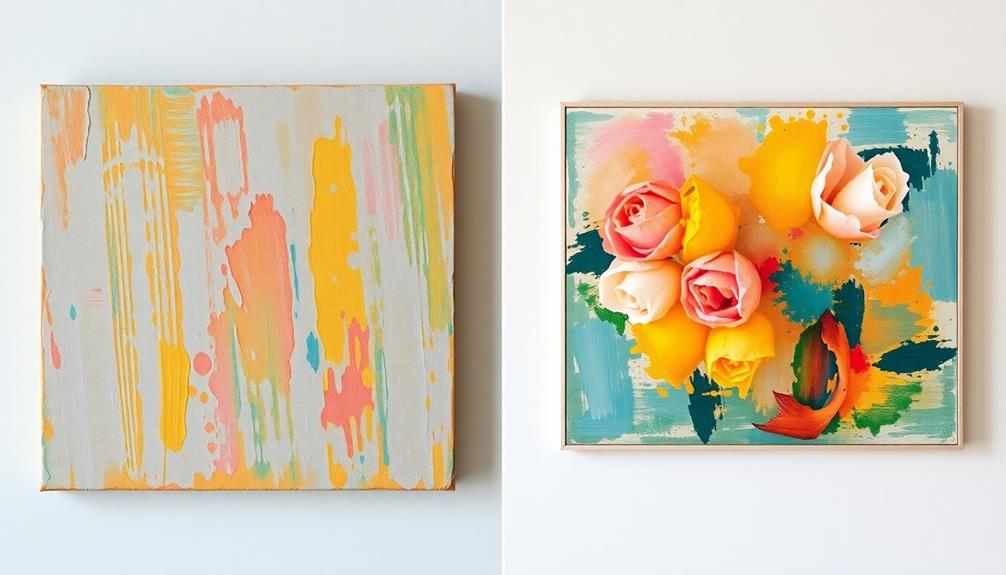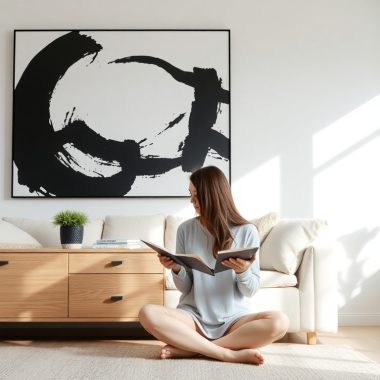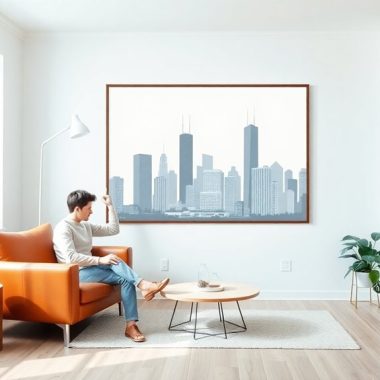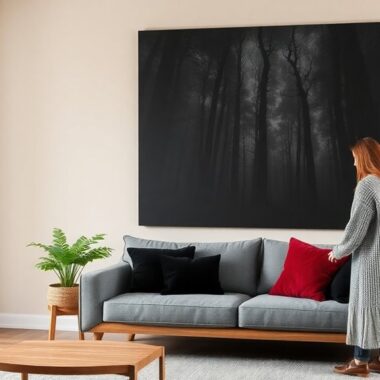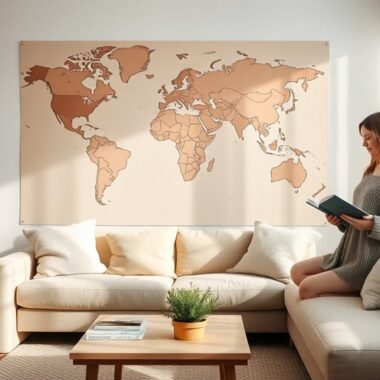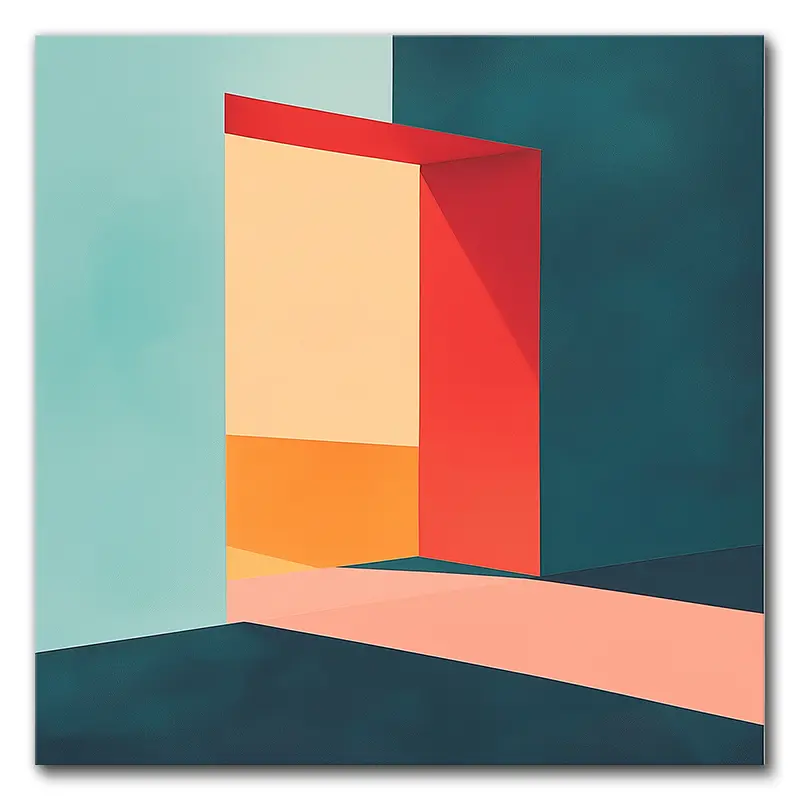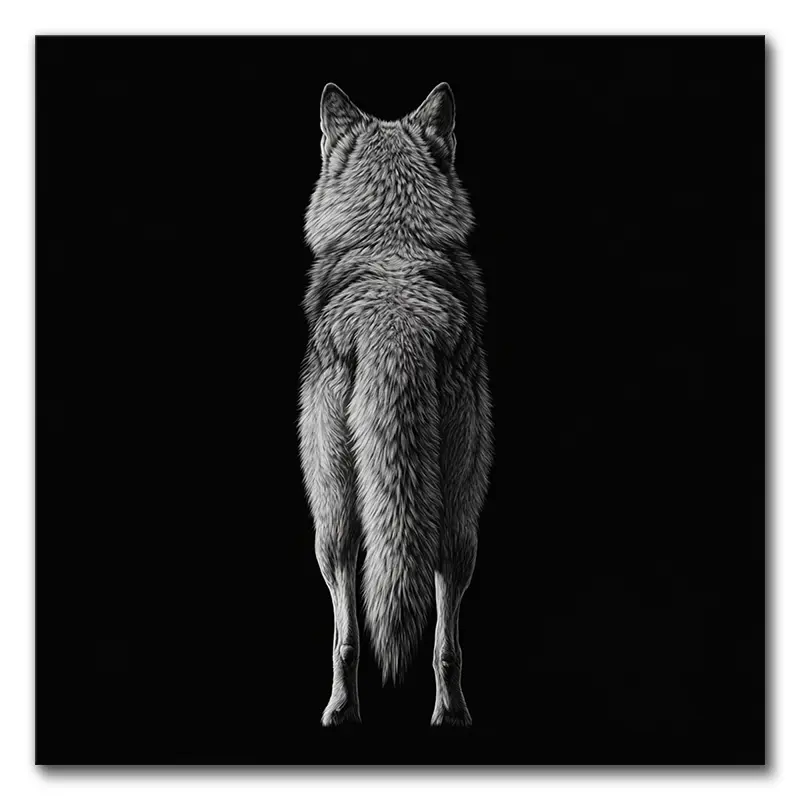Understanding the difference between art canvas and canvas prints can help you choose the right type for your space. Art canvas, made from high-quality materials like cotton, absorbs paint well, delivering vibrant colors and textures, while canvas prints utilize advanced printing techniques for detailed reproductions. Although both options offer aesthetic appeal, art canvases provide a unique, original touch, while prints are budget-friendly and durable. Plus, canvas prints can easily resist damage, making them perfect for high-traffic areas. The choice depends on your style and budget, but there's much more to discover about these art forms that might surprise you.
Definition of Art Canvas
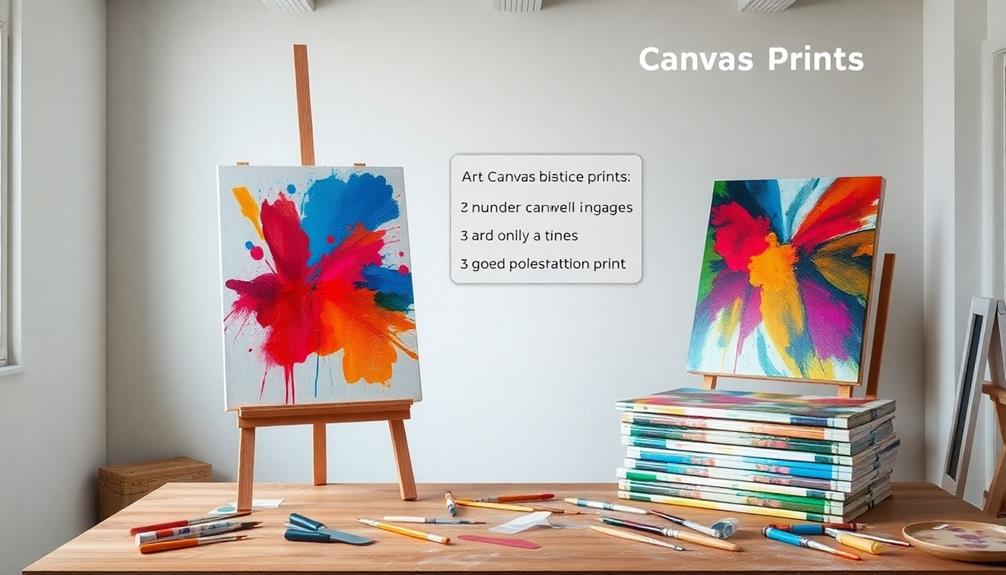
Art canvas serves as the backbone for many artists' creations, providing a versatile and durable surface for original artworks. When you think of art canvas, picture high-quality fabric, typically made from cotton or a cotton-polyester blend. This material's unique properties allow it to absorb paint exceptionally well, resulting in vibrant colors and rich textures that truly enhance your artwork.
It's this very quality that sets art canvas apart from canvas prints, which are merely reproductions of existing artworks. Artists often stretch art canvas over a sturdy wooden frame, making it easy to hang and display their masterpieces without needing additional framing. This convenience allows you to appreciate the work in its purest form, showcasing the artist's individual style and expression.
Unlike print canvas prints, which replicate an original piece, art canvas embodies the creative journey of the artist, capturing their unique vision and emotions. Moreover, the longevity of art canvas is impressive—when cared for properly, it can last over 75 years.
This durability makes it a popular choice for both artists and collectors who seek lasting quality in their pieces. So, if you're considering diving into the world of art, remember that choosing art canvas could be the first step in creating something truly unique and long-lasting.
Whether you're an aspiring artist or a collector, understanding the significance of art canvas can deepen your appreciation for the works you encounter.
Overview of Canvas Prints
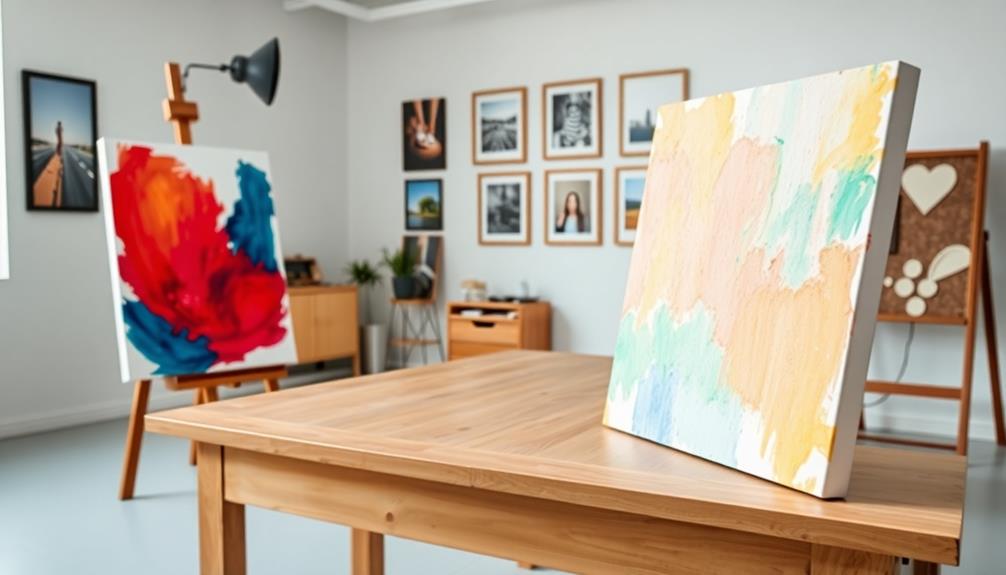
Canvas prints offer a unique way to showcase art, as they're made from various materials like polyester, cotton, and linen, each providing durability and enhancing color vibrancy.
With advanced printing techniques, such as high-quality inkjet giclee, these reproductions achieve stunning detail and richness that can rival traditional artwork.
Plus, their ability to be produced in larger sizes without the need for mats or borders makes them an attractive option for any wall display.
Canvas Material Options
When it comes to choosing the right canvas material for your prints, you'll find several options that cater to different preferences and styles. Each type of canvas brings its unique characteristics, so it's good to know what's available. Here are some popular materials you might consider:
- Cotton: Known for its softness and durability, cotton canvas is a classic choice that holds colors beautifully, making it ideal for detailed artwork.
- Polyester: This synthetic option is lightweight and resistant to stretching, offering a smooth surface that's perfect for vibrant prints.
- Linen: With a natural texture, linen canvas adds a sophisticated touch. Its unique weave can enhance the visual depth of your artwork.
- Specialty options: For those looking to stand out, materials like hemp and jute can provide an eco-friendly twist to your prints, showcasing a rustic charm.
Regardless of your choice, canvas prints are generally more resistant to damage and wear compared to paper-based alternatives.
Stretched over a wooden frame, these materials create a textured surface that enhances your art's depth and visual appeal.
Printing Techniques Explained
Choosing the right canvas material sets the stage for understanding how printing techniques bring your artwork to life. Canvas prints are primarily produced using inkjet giclee technology, which guarantees vibrant color reproduction and exceptional detail retention. This method allows artists to replicate their work with impressive accuracy, capturing nuances that other printing methods might miss.
Common materials for canvas prints include cotton, polyester, and linen. Each provides a unique textured surface that enhances the visual appeal of your artwork. When you choose a canvas print, you're not just selecting a picture; you're opting for a piece of art that feels substantial and authentic.
Typically, canvas prints are stretched over a wooden frame, giving them depth and allowing for an easy, frameless display option. This setup not only showcases your art beautifully but also mimics the feel of traditional oil and acrylic paintings, making it a popular choice for reproducing fine art.
Unlike traditional paper prints, canvas prints are more durable. They resist tearing and creasing, making them suitable for high-traffic areas, guaranteeing your artwork remains stunning for years to come.
Fundamentally, these techniques and materials work seamlessly to breathe life into your artistic vision.
Aesthetic Appeal Comparison
The allure of canvas prints lies in their unique ability to transform a space with depth and dimension. Unlike traditional framed art, canvas prints enhance the artwork's visual appeal, creating a painterly quality that draws you in.
Here are some key features that contribute to their aesthetic charm:
- Textured Fabric: The texture of the canvas adds layers to the artwork, making it feel more dynamic and alive.
- Vibrant Colors: Using high-quality inkjet giclee technology, these prints retain vibrant colors for an eye-catching display.
- Matte Finish: The matte surface reduces glare, ensuring your artwork remains visible even in brightly lit areas.
- Frameless Presentation: Displaying canvas prints without frames gives your space a modern, casual vibe and allows for creative arrangements, such as multi-panel designs.
With their lightweight nature, canvas prints are also easy to install and rearrange, giving you the freedom to refresh your décor whenever you like.
Key Differences Between Mediums
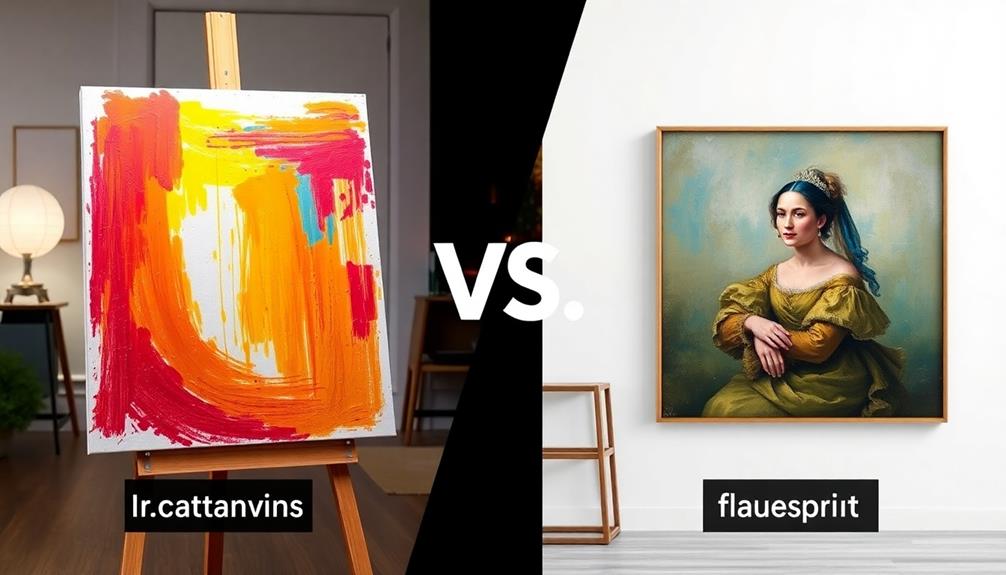
When it comes to art canvas and canvas prints, the differences in material composition and texture can considerably affect your experience.
Art canvas is designed for original creations, while canvas prints offer a reproduction that captures the essence of the original artwork.
Understanding these distinctions helps you appreciate the unique qualities of each medium, from the tactile feel of the canvas to the visual depth of the prints.
Material Composition Differences
In exploring the material composition differences between art canvas and canvas prints, you'll notice key distinctions that impact both quality and longevity. Understanding these differences can help you make informed choices for your artwork or decor.
- Material Quality: Art canvas is typically made from high-quality cotton or a blend of fibers, while canvas prints often use standard materials, which may vary in quality.
- Weight and Thickness: Art canvas generally features a higher weight and thickness, offering greater durability compared to the thinner materials found in many canvas prints.
- Smoother Texture: Canvas prints usually have a smoother surface, which can affect how colors appear, making them less rich compared to the textured surface of art canvas.
- Archival Standards: Art canvas often includes archival-grade materials designed for longevity, whereas some canvas prints don't meet these standards, leading to potential degradation over time.
Texture and Visual Appeal
Texture brings a dynamic quality to art, especially when comparing art canvas to canvas prints. When you look at canvas prints, you'll notice a unique texture that enhances depth and dimension, making them perfect for reproducing painterly styles filled with intricate details.
Unlike smooth paper prints, the tactile surface of canvas creates a painterly feel that raises the visual appeal of the piece on display. This textured surface doesn't just look good—it absorbs colors differently than paper does. As a result, you get vibrant colors and a more dynamic presentation of the artwork, drawing the viewer in for a closer look.
Plus, canvas prints can be displayed without frames, contributing to a contemporary and casual aesthetic that's hard to resist. This lack of framing allows the texture to shine, adding an original touch and visual interest that you won't find in flat paper prints.
Texture and Visual Appeal
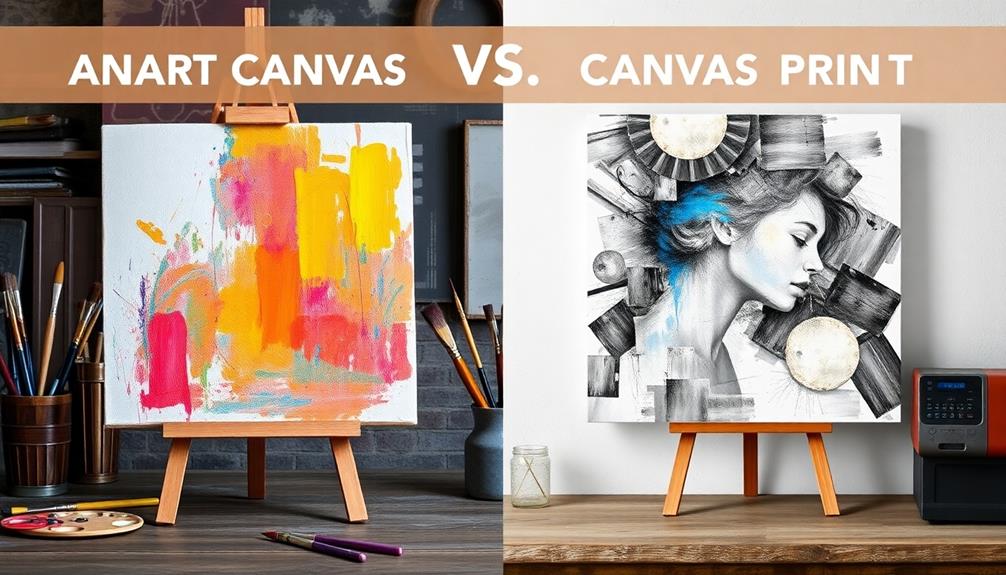
How does the texture of a canvas print enhance its visual appeal? The unique texture of canvas prints not only adds depth and dimension but also creates a painterly feel that captures your attention. This tactile quality invites you to engage more closely with the artwork, making the experience more immersive.
Here are four reasons why canvas texture notably enhances visual appeal:
- Depth and Dimension: The textured surface adds layers to the artwork, creating a rich visual experience that flat paper prints simply can't match.
- Vibrant Imagery: Canvas prints offer excellent color retention and saturation. This means that your images will pop with vibrancy, drawing in viewers and making a bold statement in any space.
- Reduced Glare: Unlike smooth paper prints, canvas minimizes glare and reflections. This guarantees that even in bright environments, the details remain visible, letting you appreciate the artwork without distractions.
- Matte Finish: The matte finish of canvas helps to enhance the richness of colors. This feature not only reduces distractions from harsh lighting but also contributes to a more engaging visual experience compared to traditional prints.
Durability and Maintenance
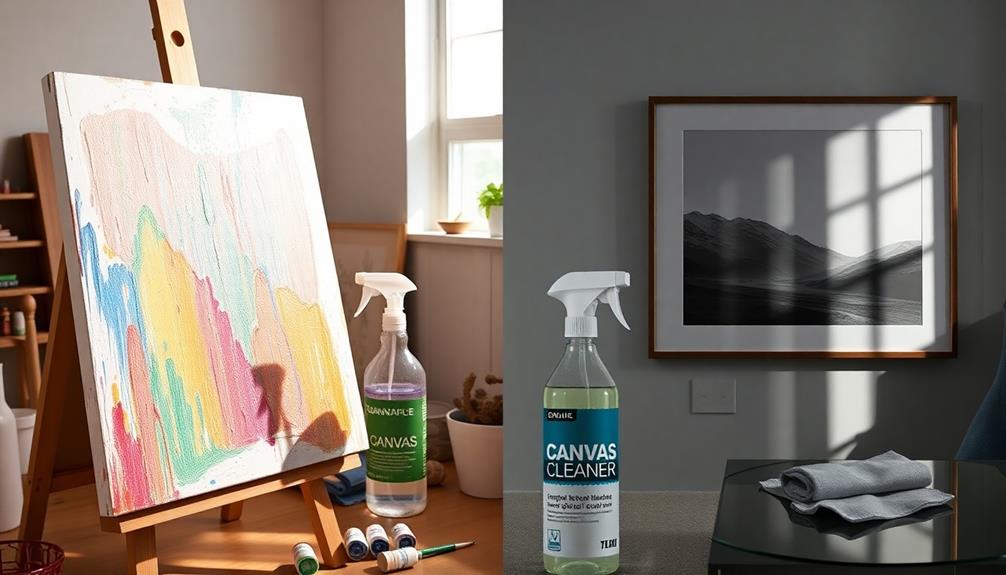
Canvas prints consistently outshine traditional paper prints when it comes to durability and maintenance. Unlike their paper counterparts, canvas prints resist tearing and creasing, making them ideal for high-traffic areas or even rooms with exposure to the elements. The construction of canvas prints, which features a tightly pulled canvas over a sturdy wooden frame, enhances their resilience and longevity.
You'll be pleased to know that canvas materials are typically resistant to fading, allowing them to last over 75 years without significant deterioration. In comparison, paper prints often start showing signs of wear and fading within just a few years. This impressive durability means that a canvas print can become a long-lasting part of your decor, standing the test of time while maintaining its vibrant appearance.
While canvas prints are durable, applying protective coatings can further enhance their resistance to dirt and moisture. This added layer of protection guarantees that your artwork stays looking fresh and lively over time.
Regular maintenance is straightforward, too. Just a gentle dusting and occasional spot cleaning will keep your canvas prints in top shape. This is a breeze compared to the upkeep of framed prints, which require cleaning the glass and monitoring for moisture buildup.
Framing Options and Considerations
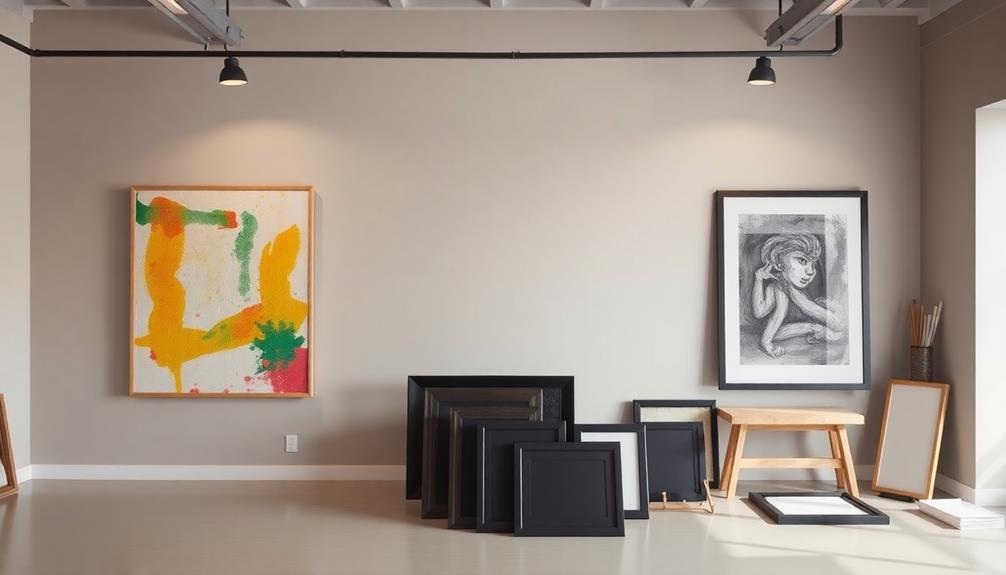
When it comes to showcasing your artwork, choosing the right framing option for canvas prints can make a significant difference in presentation and style. The way you frame your canvas can enhance its visual appeal and complement your home decor.
Here are some popular framing options to ponder:
- Floating Frames: These frames give the illusion that your canvas is "floating" within the frame, creating a modern look that emphasizes the artwork itself.
- Traditional Frames: If you prefer a classic aesthetic, traditional frames can add a timeless touch. Wood frames provide warmth, while metal frames offer a sleek, contemporary vibe.
- No Frame: Canvas prints can be displayed without any frame, allowing the texture and depth of the canvas to shine. This option is often favored for a minimalist, contemporary appearance.
- Weight and Size Considerations: When selecting a frame, think about the weight and size of your canvas. Larger pieces might require sturdier frames for proper support and durability.
Proper framing not only enhances the visual impact but also protects your canvas prints. It safeguards the edges from wear and dust accumulation, ensuring that your artwork stays vibrant for years to come.
Cost Comparisons
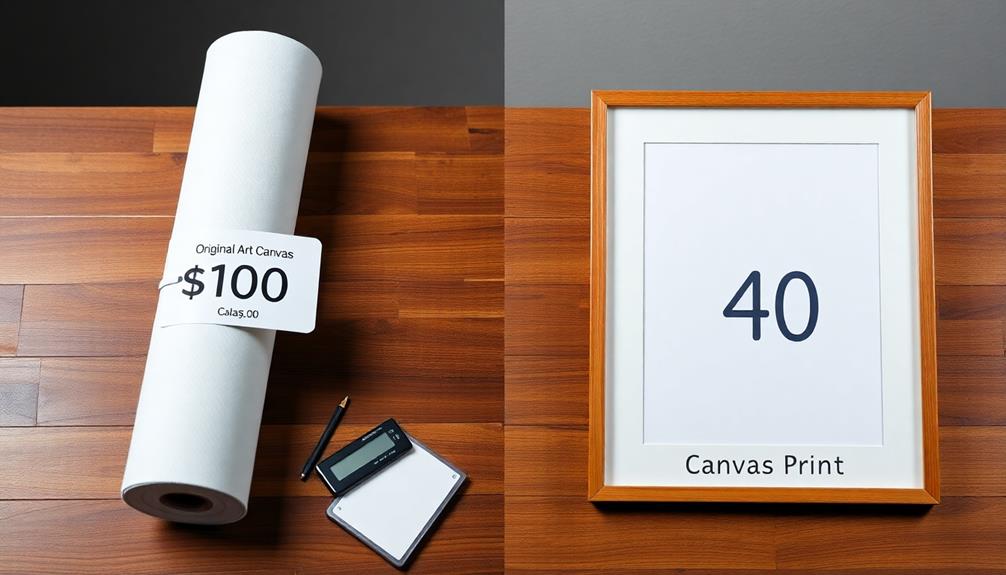
Art enthusiasts often find themselves weighing the cost differences between canvas prints and traditional framed prints.
When it comes to pricing, canvas prints often shine as a more budget-friendly choice. You'll typically find that the costs for high-quality canvas prints start around $30 for smaller sizes, gradually increasing with larger dimensions. This competitive pricing is largely due to lower production costs, making canvas prints an attractive option, especially for those seeking larger artworks.
On the flip side, framed prints come with additional expenses. Quality frames and proper mounting can greatly increase the overall price, particularly for bigger pieces. This means that if you're eyeing a striking large framed print, you might want to prepare for a hefty bill.
Another great option is canvas wall clusters, which consist of multiple smaller canvases. Not only do these clusters create an eye-catching display, but they also help reduce shipping costs, making them a cost-effective alternative to a single large framed print.
While posters may seem like a low-cost solution due to mass production, their frequent need for replacement can lead to higher long-term expenses. Canvas prints, with their durability and longevity, often prove to be a wiser investment.
Choosing the Right Option
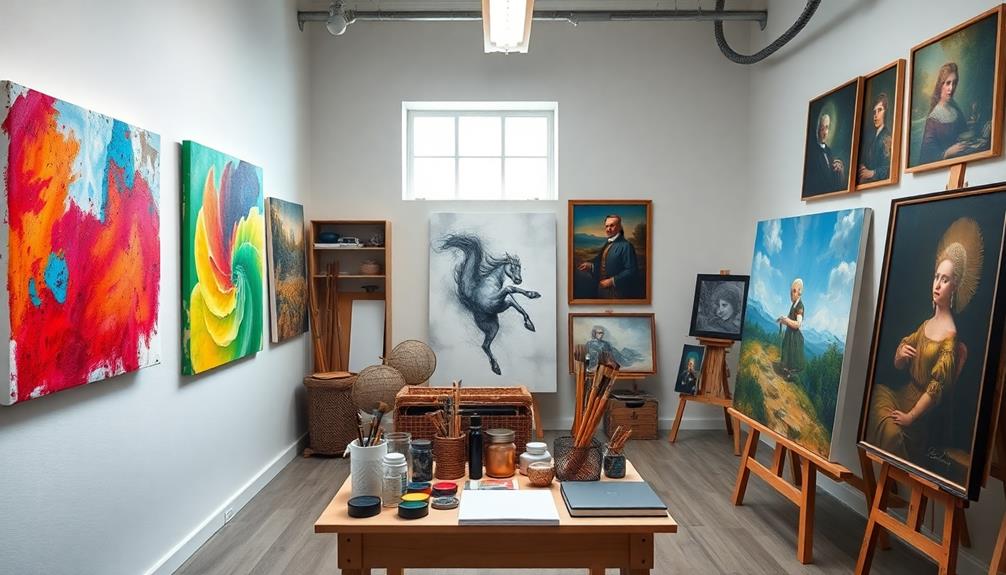
Deciding between art canvas and canvas prints hinges on your personal taste and the context in which you'll display the piece. Understanding the differences can help you make an informed choice. Here are a few things to reflect on:
- Originality: If you value uniqueness, art canvas featuring original paintings can provide that one-of-a-kind aesthetic. Canvas prints, being reproductions, lack this distinction but offer other benefits.
- Quality and Detail: Canvas prints often utilize advanced inkjet giclee technology, ensuring vibrant colors and high detail. If you're after a vibrant reproduction, they're a sound option.
- Durability: Think about where you'll hang your art. Canvas prints tend to be more durable and resistant to damage, making them perfect for high-traffic areas or rooms with fluctuating lighting.
- Budget Considerations: If you're looking for artistic visuals without the hefty price tag of original artworks, canvas prints provide an affordable alternative. They give you the aesthetic appeal without the financial commitment of purchasing an original piece.
Ultimately, the right choice depends on your preferences and needs.
Whether you lean toward the charm of original art or the practicality of canvas prints, each option has its own merits.
Take your time to assess what resonates with you, and you'll find the perfect fit for your space.
Practical Applications and Tips

Choosing between art canvas and canvas prints opens up a range of practical applications and tips for displaying your selected piece. If you're looking for a unique touch, original art canvases offer that one-of-a-kind charm, showcasing the artist's individual technique.
However, if you want something that fits your budget better, canvas prints are an excellent alternative. They provide a variety of sizes and styles, allowing you to curate your space without breaking the bank.
When considering durability, canvas prints shine—especially in high-traffic areas or spaces exposed to moisture and sunlight. You can confidently hang them in your living room or kitchen, knowing they'll withstand the test of time better than traditional paper prints.
Plus, they don't necessarily need framing, giving your walls a sleek, modern look.
If you do opt for original art canvases, keep in mind that they may require protective framing to maintain their integrity. This isn't just about aesthetics; it's about preserving the artwork for years to come.
Lastly, think about the investment aspect. Original art can greatly increase in value over time, making it a worthy consideration. In contrast, canvas prints provide immediate gratification without the hefty price tag.
Final Thoughts
In conclusion, understanding the differences between art canvas and canvas prints can greatly impact your decision-making process when choosing artwork for your space. Did you know that approximately 60% of people prefer the texture and depth of art canvas over prints? This preference highlights the importance of considering your personal taste, budget, and intended use. Whether you lean towards original works or reproductions, both options offer unique benefits that can enhance your environment and showcase your style. At VerVeLush, we specialize in a curated selection of high-quality art canvases and stunning canvas prints, ensuring you find the perfect piece to elevate your space. Explore our collection to discover how we can help you express your individuality through art.

